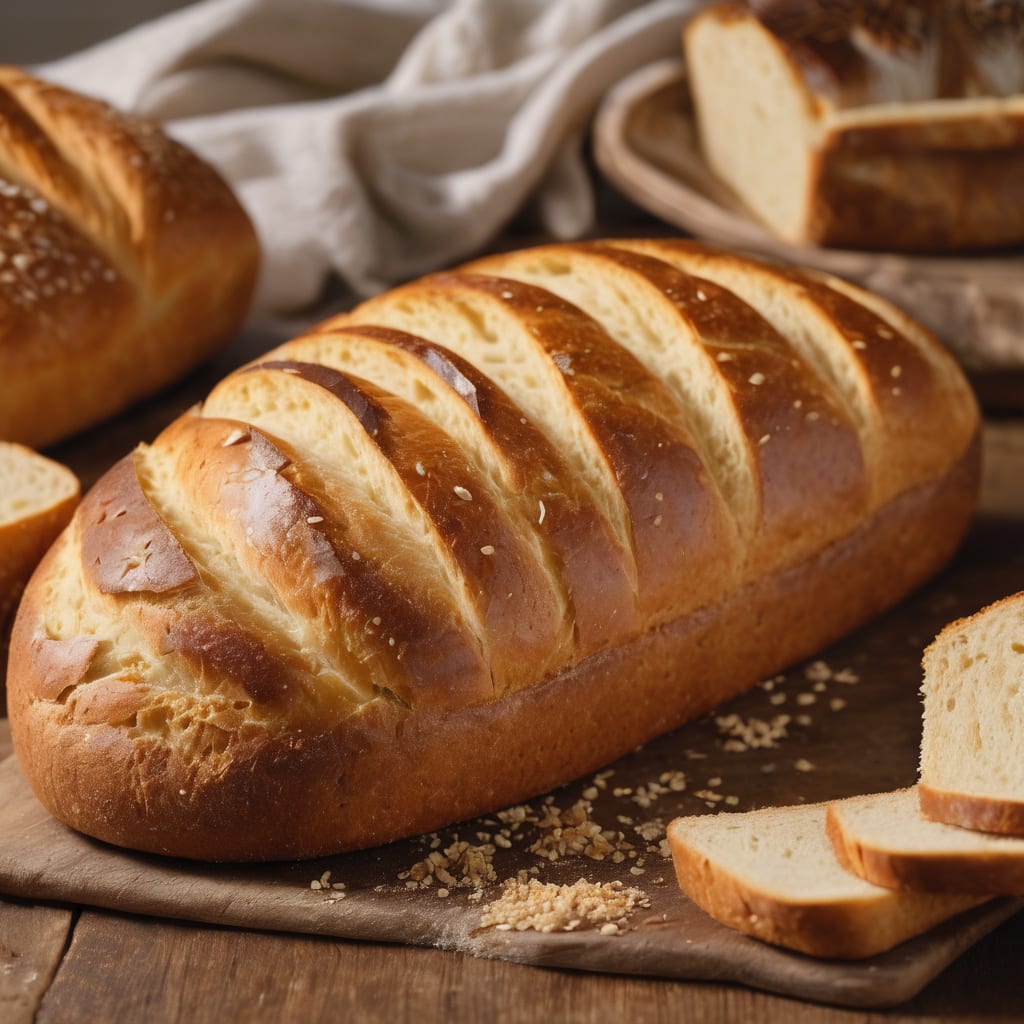Bread Through Time
Tracing the Rich Tapestry of Humanity's Oldest Staple Food

Bread, a simple yet essential food, has journeyed alongside humanity throughout history, shaping cultures, economies, and daily life. This exploration delves into the intricate story of bread, from its humble origins to becoming a global culinary icon.
A Humble Beginning: The Birth of Bread
The history of bread dates back to ancient civilizations, with evidence suggesting that the first bread was likely an accidental discovery. Early humans, grinding grains for porridge, inadvertently created a mixture that, when exposed to natural elements, underwent fermentation. This serendipitous event marked the birth of leavened bread.
The Ancient Egyptians: Mastering the Art of Baking
Discovery of Leavening:
The ancient Egyptians are credited with refining bread-making techniques. The discovery of wild yeast and the art of leavening transformed bread into a more palatable and versatile staple.
Symbolism of Bread:
In Egyptian culture, bread held symbolic significance, often associated with life and the divine. Elaborate bread-making processes were depicted in hieroglyphs, showcasing the importance of bread in daily life.
Bread in Ancient Greece and Rome: A Staple of Civilization
Introduction of Public Bakeries:
Ancient Greece and Rome witnessed the establishment of public bakeries, reflecting the growing importance of bread in urban life. These bakeries became central hubs for social interaction.
Varieties of Bread:
The Greeks and Romans experimented with various types of bread, introducing innovations such as spelt and barley bread. Bread became a dietary cornerstone, consumed by people across social classes.
The Middle Ages: Bread as the Staff of Life
Feudal System and Grain Distribution:
The feudal system of the Middle Ages heavily relied on bread, and the distribution of grain was often a means of social control. Peasants' daily lives revolved around cultivating and harvesting grains for bread.
Role of Monasteries:
Monasteries played a crucial role in preserving and advancing bread-making techniques. Monks became skilled bakers, developing diverse recipes and sharing their knowledge across Europe.
The Renaissance and Beyond: Bread's Evolution Continues
Introduction of White Bread:
With advancements in milling technology, white bread emerged as a symbol of status and wealth. The whiter the bread, the more refined it was considered, leading to distinctions in societal classes.
Bread in Colonial America:
The arrival of European settlers in the Americas brought wheat cultivation and bread-making traditions. Cornbread, a staple in Native American diets, blended with European techniques, creating a unique American bread culture.
Industrial Revolution: Bread for the Masses
Mechanization of Milling and Baking:
The Industrial Revolution revolutionized bread production. Mechanized milling and baking allowed for mass production, making bread more accessible to the general population.
Challenges of Modernization:
While industrialization increased bread availability, it also raised concerns about the quality of mass-produced bread. The shift towards convenience sometimes compromised nutritional value.
Bread in the 20th Century: A Global Culinary Icon
World Wars and Rationing:
The 20th century brought challenges during wartime, leading to rationing and adaptations in bread recipes. Innovations like sliced bread, introduced in 1928, transformed convenience in households.
Global Bread Varieties:
As cultures intermingled, a diverse array of bread emerged globally. From baguettes in France to naan in India, each region contributed to the rich tapestry of global bread varieties.
Bread Today: A Culinary Canvas
Artisanal Bread Movement:
In recent decades, the artisanal bread movement has gained momentum. Bakers and consumers alike are rediscovering traditional techniques, emphasizing quality over quantity.
Bread in the Digital Age:
Social media and online platforms have further fueled the fascination with bread. Sharing recipes, techniques, and the joy of bread-making has become a global, digital community.
In Conclusion: The Enduring Legacy of Bread
From its humble origins as an accidental creation to becoming a global symbol of sustenance, bread has stood the test of time. Its journey through history reflects the evolution of human societies, culinary innovations, and cultural interchanges. As we continue to enjoy the simple pleasure of breaking bread, we connect with an ancient tradition that unites us across continents and centuries.
About the Creator
Kei Ben
A fresh read goes a long way.
Enjoyed the story? Support the Creator.
Subscribe for free to receive all their stories in your feed. You could also pledge your support or give them a one-off tip, letting them know you appreciate their work.
Reader insights
Nice work
Very well written. Keep up the good work!
Top insight
Heartfelt and relatable
The story invoked strong personal emotions






Comments
Kei Ben is not accepting comments at the moment
Want to show your support? Send them a one-off tip.